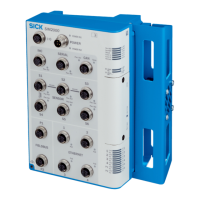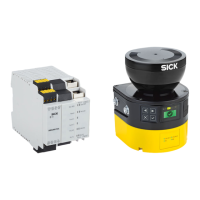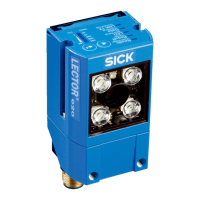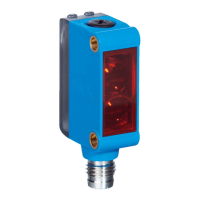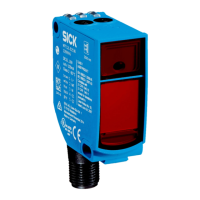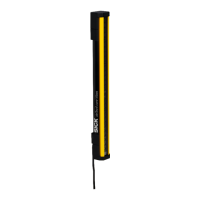Complementary information
T
he required minimum distance depends, among other things, on the resolution set on
the device.
Notes on selecting the resolution:
•
If you choose a fine resolution, the protective field range is smaller and the pro‐
tective field is only suitable for smaller hazardous points. The required minimum
distance is smaller, however, so you can mount the device closer to the hazardous
point.
•
If you choose a coarser resolution, the protective field range is larger and the
protective field is also suitable for larger hazardous points. The required minimum
distance is larger, however, so you need to mount the device further away from the
hazardous point.
4.3.11.2 Calculation example for the minimum distance
Overview
T
he following examples show the calculation of the minimum distance S for an
approach orthogonal or parallel to the optical axis (Z-axis) of the camera sensor. The
calculation is performed in accordance with ISO 13855 and the specific specifications
of the camera sensor. A different calculation may be required depending on the appli‐
cation and the ambient conditions, for example when approaching the optical axis of
the camera sensor at any angle.
Minimum distance S with orthogonal approach to the optical axis
S = 2,000mm/s × T + C
W
here:
•
S =minimum distance, in millimeters (mm)
•
T = stopping/run-down time for the entire system, in seconds (s)
(Response time of the device + machine’s stopping/run-down time, including
r
esponse time of the machine’s control system and signal propagation time)
•
C = supplement in millime
ters (mm)
The reach/approach speed is already included in the formula.
Table 10: Supplement C for approach orthogonal to the optical axis, hazardous point protection
Object resolution
H
and
Object resolution
Arm
Object resolution
Leg
Object resolution
Body
160mm 300mm Object resolution is
no
t applicable to this
application.
Object resolution is
not applicable to this
application.
Minimum distance S with parallel approach to the optical axis
S = 2,000mm/s × T + Tz + C
W
here:
•
S =minimum distance, in millimeters (mm)
•
T = stopping/run-down time for the entire system, in seconds (s)
(Response time of the device + machine’s stopping/run-down time, including
r
esponse time of the machine’s control system and signal propagation time)
•
T
Z = tolerance zone of the device
•
C = supplement in millimeters (mm)
The reach/approach speed is already included in the formula.
4 P
ROJECT PLANNING
32
O P E R A T I N G I N S T R U C T I O N S | safeVisionary2 8025919/1I9E/2023-01-09 | SICK
Subject to change without notice
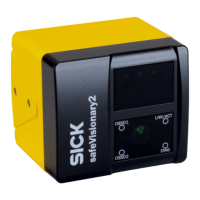
